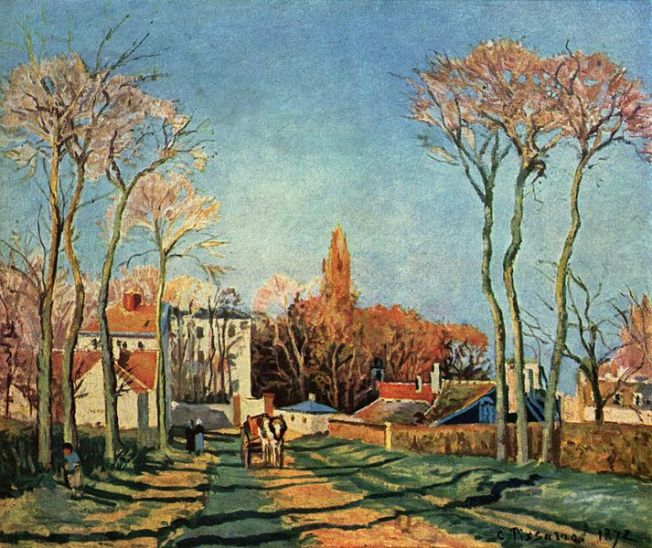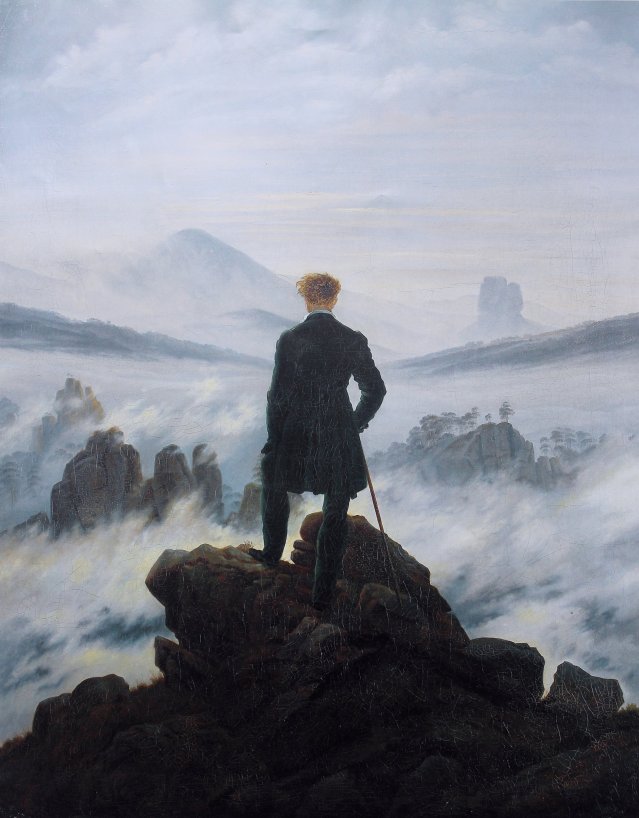
Vasiliy Wassilyevich Kandinskiy (Rusça: Василий Кандинский) (d. 16 Aralık [E.U. 4 Aralık] 1866, Rusya – ö. 13 Aralık 1944), ressam ve sanat kuramcısı. Teorileri ve uygulamalarıyla 20. yüzyılda etkin rol oynayan önemli bir kuramcı ve ressam olmuştur. Avrupa’da soyut sanatın öncülüğünü yapmıştır.
Kandinskiy 1866’da Moskova‘da doğdu. 1886 yılında Moskova Üniversitesi’nde hukuk ve ekonomi okumaya başladı. Üç yıl sonra Vologda’ya düzenlenen etnografik bir geziye katıldı, ardından Rus Halk Sanatı üzerine bir makale yazdı. Bu deneyimin Kandinsky’yi ne kadar etkilediği, Song of Volga , Couple Riding, Colorful Life adlı ilk dönem resimlerinde rahatlıkla fark edilir. Bu resimler, kompozisyon koyu üzerine açık ve ışıklı formlar ile kurgulanmıştır. St. Petersburg ve Paris’e seyahat eden Kandinsky, 1896 senesinde hukuk alanında ki kariyerini terk edip ressam olmaya karar verdi. İyi Almanca bildiği için ve eski Rus milliyetçilerinin çoğunlukla yaşadığı Münih‘e taşındı. 1900 ve 1908 yılları arasında Moskova Sanatçılar Birliği beraberinde sergiler düzenledi. Diğer yandan Münih sanat ortamına girdi ve sergilerde ismi görünmeye başladı. Yerel sanat okullarında çalışmalar yaptıktan sonra Phalanx sanatçılar grubunu kurdu. Her yönden yetenekli bir sanatçıydı ve öncelerinde öğrencisi olduğu Phalanx grubunun daha sonra öğretmeni oldu. Fransız filozof Charles Fourier’nin (1772–1837), yarattığı ütopik toplumu için kullandığı bir kavram olan Phalanx kelimesi, 1901 yılında Kandinski ve arkadaşları tarafından, sanatçıların sergi açabilme olanaklarını genişletmeyi amaçlayan sanatçı grubuna verilmiş bir isim olarak sanat tarihindeki yerini aldı. Oluşum, 1904 senesine kadar Münih sanat ortamında aktif olarak rol oynamıştır.
10 yıl beraber yaşadığı Gabriele Münter o dönemde devlet okullarına kadınların alınmaması nedeniyle erkek ve kadınlara eşit davranılan Phalanx okuluna katılmıştı. Kandinskiy ile Phalanx’da tanıştı ve öğrencisi oldu. Bunu birliktelikleri ve yaşadıkları aşk izledi.
1904’te Kandinskiy ve Münter 4 yıl sürecek olan Venedik, Tunus, Hollanda, Fransa ve Rusya gezilerine başladılar. Gezileri boyunca Van Gogh, Gauguin ve Monet gibi empresyonisterin sanat yaklaşımları konusunda incelemelerde bulundular. 1908’de tekrar Münih’e dönerek yerleştiler.








